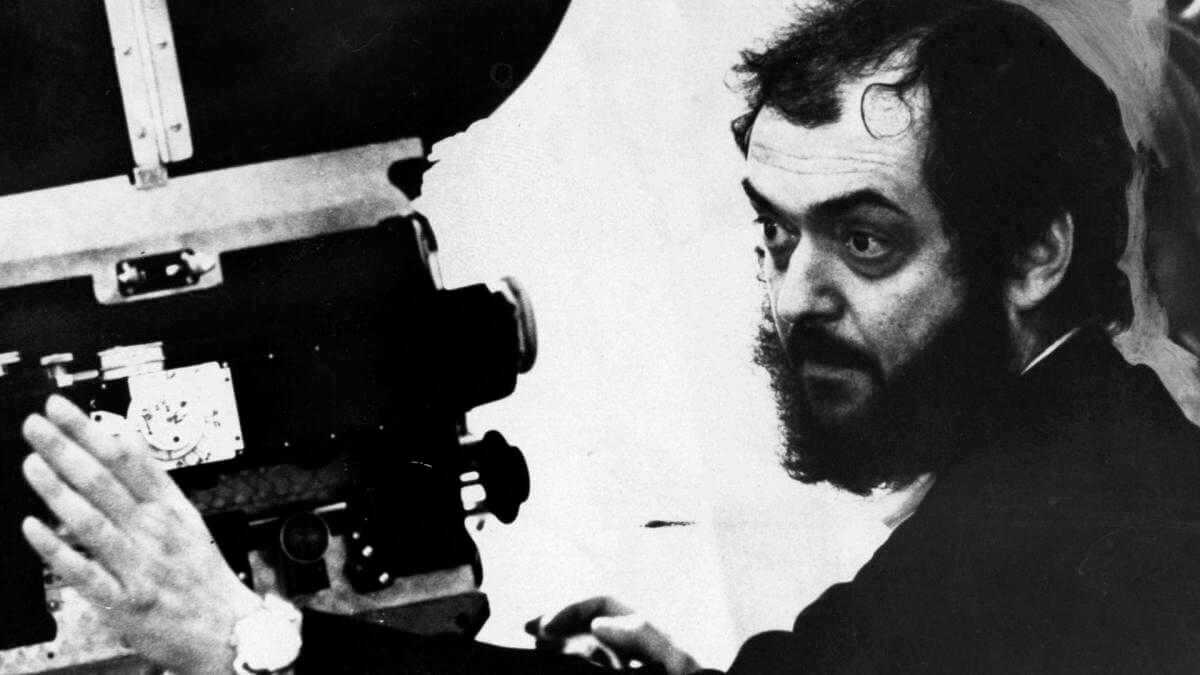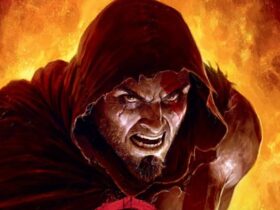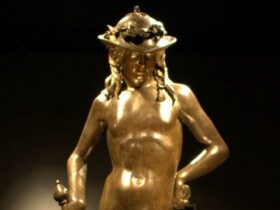What are the ten best films by one of the most popular directors in history, Stanley Kubrick? We tell you in our ranking
Stanley Kubrick was born on July 26, 1929 in New York. Son of a doctor of a housewife, both Jews but with Austrian and Polish ancestryfrom an early age he was passionate about the myths of ancient Greece, Nordic fairy tales, but also chess (so much so that he became a professional player) and jazz music. But the turning point soon comes, when for the first time he finds a camera in his hands, a gift from his father. Shortly after he became a photographer and the transition from photography to cinema is rather obvious. At nineteen, he spends five evenings a week in the projection room of the MOMA in New York and thanks to his salary as a journalist he pays for four years of study at the academy of cinematographic art. He begins his career a predestined which undeniably changed cinema, marking some of the most significant stages of the seventh art.
From the first feature film is Fear and Desire, 1953 and unobtainable for years, defined by Stanley Kubrick himself as “a serious attempt made in a clumsy way”, in Eyes Wide Shut, from 1999, released posthumously amidst a thousand chatter. From American origins to expatriation (almost voluntary exile) in England. In this article we aim to draw up a list of Stanley Kubrick’s best films, trying to keep the private life of the award-winning director as separate as possible from the professional one. There are many reasons that led to its definition one of the greatest filmmakers in the history of cinema, not least the evocative photography and music with which, sometimes in games of contrasts, he has managed to elevate each of his films. Although he has produced relatively few feature films (there are only thirteen in total), his genius can be seen in each of the films.
10. Spartacus | Stanley Kubrick’s best movies
Stanley Kubrick’s first war film immediately outlines his anti-militarist spirit and his contempt for institutions. Not a blockbuster to glorify the great past of the Roman Empire and of those who governed it, but a tale from the perspective of the lowest class of the time: slaves, gladiators and women. Written by Dalton Trumbo and inspired by the true story of Spartacus, fictionalized by Howard Fast, Kubrick takes us back in time in costumes but not in soul and human emotions.
They are always there political corruptionthe altars and deceptions of those who should lead the great Roman empire. Men who instead of pursuing noble causes seek power, vanity and wealth. Opposed to them are the slaves, the poor, who without rights, money or property rebel and lose their lives to pursue higher values. Although two thousand years have passed, Kubrick shows us in his own way that society and human nature are essentially the same.
9. Lolita | Stanley Kubrick’s best movies
Lolita is another Stanley Kubrick film that caused an immense stir and was consequently heavily censored. Based on the novel of the same name by Vladimir Nabokovis a drama that tells an obsessive and perverse love story between a little girl and her stepfather. Sue Lyon is perfect in the role of the young girl demonstrating a real talent in bringing out a natural mix of innocence and eroticism in every movement of her. Not to mention Peter Sellersnow a close collaborator of the director, who enriched the screenplay with ironic improvisations, which lighten the controversial theme of the film.
Once again, Kubrick shows his ability to transpose hot topics, such as pedophilia, on the screen while remaining in balance between scandal and socially accepted parameters. Obviously there was no shortage of censorshipwhich led the film to be much less explicit than expected, but even if many scenes are left to the imagination of the viewer, Lolita does not lose its value, but has an added aura of mystery that stimulates the mind of the beholder.
8. Barry Lyndon | Stanley Kubrick’s best movies
Barry Lyndon is without a doubt an aesthetically perfect film. Stanley Kubrick spent a great deal of time studying and being inspired by the art of the period. The composition of the scenes, the costumes and photography of the film are in fact all inspired by the paintings of 18th century landscape painters, as well as by the prints and drawings of the time. The photographer Kubrick, in collaboration with John Alcott, decided to shoot using only natural light, possibly with the help of candles and oil lamps. Given the very difficult task, special cameras and lenses were even used, designed by Zeiss for NASA.
Far from being a work of art that pleases the eye alone, the film is also a personal and human epic of rise and fall. A thin film, balanced and full of details, which leaves the viewer anchored for more than three hours to the superb narration. Ultimately, Barry Lyndon is one of Kubrick’s freest works.
7. Eyes Wide Shut | Stanley Kubrick’s best movies
Eyes Wide Shut is Stanley Kubrick’s latest masterpiece, released posthumously. With a cast that includes two of the fittest actors of the 90s and spouses (albeit broken) Nicole Kidman and Tom Cruise, the British director changes his face once again and gives the viewer a psychological thriller of an elegance that seeks perfection. By adapting Arthur Schnitzler’s short novel Double Dream to the contemporary, the director once again demonstrates his enormous ability to vary in themes, styles and staging.
The game of contrasts of the red and blue color ranges is among the most refined that the history of cinema can remember. The costume party scene, then, always has something magical every time you see it and is one of the best scenes in all of Kubrick’s filmography. Seeing Eyes Wide Shut always leaves you partly amazed and partly regretted: amazed by what we see, regretted thinking about how much cinema has lost with the death of Stanley Kubrick.
6. Paths of Glory | The best films of Stanely Kubrick
Paths of Glory is a milestone of cinema both for the themes addressed and for the stylistic choices that have taught many successors, from 1917 to Dunkirk. The film opens with a long e magnificent long shot along the French trenches of the First World War. The shots are dedicated to exhausted soldiers (scene openly referred to by Mendes) and the French one is the only army that we will see throughout the film: as in Nolan’s film, in fact, the enemy is invisible.
A dramatic but at the same time highly satirical and ironic work regarding power (and its abuses) and war conflicts with one of the most powerful endings in the history of cinema. A big Kirk Douglasat the time practically reborn after a cinematographic ostracization, marks the phases of the film in which Kubrick talks a lot about humanity and little about war.
5.Full Metal Jacket | Stanley Kubrick’s best movies
This is Kubrick’s last war film it could only be about the war in Vietnam, known to history for the extensive television coverage that led to greater access to information on the conflict and consequent revolts of pacifists, especially young people. In this case the director was inspired by the novel Born to Kill by Gustav Hasford, himself a former Marine and war correspondent. Here too there is no shortage of anti-militarist spirit and irony, which transform the film into a black comedy in certain sequences.
One of the characters passed into history is definitely the sergente Hartman (who was not played by an actor but by a former Marine instructor, Ronald Lee Ermey) and his insults shouted in the faces of the soldiers, a symbol of the director’s desecrating comedy. Although Kubrick was able to lighten a theme as dark as war, there are sequences that are difficult to digest, such as the suicide of “Palla di Lardo” and the Mickey Mouse Marchwhich once again demonstrates the characteristic contrast between images and soundtrack.
4. Shining | Stanley Kubrick’s best films
The Shining is a pearl of horror genre cinema that Stanley Kubrick gave us in 1980. Among the corridors ofOverlook Hotel the most explosive madness mixed with the supernatural is unleashed, personified by the titanic Jack Nicholson (Jack Torrance), Danny Lloyd (Danny Torrance) and desperate Shelley Duvall (Wendy Torrance). With The Shining, Kubrick gives us an entrance ticket to a growing climax of anguish, fear, mixing reality with nightmare. An authorial horror in which the transformation of the character, born from the pen of Stephen Kingis followed step by step by a modern and dynamic direction, to allow the rhythm of the film to be maintained, thanks to Garrett Brown’s steadicam.
Innovation and technical genius are combined with a plethora of memorable characters, such as Jack Torrance, the barman or the twins, as well as a series of unsolved mysteries, such as room number 237 or the sinister final photograph. Within a claustrophobic environment from which one has the feeling of not being able to escape a totally memorable film develops.
3. Dr. Strangelove | Stanley Kubrick’s best movies
Dr. Strangelove or How I Learned to Stop Worrying and Love the Bomb is a sad but truthful portrayal of what might have happened during the Cold War. Created by Kubrick in 1964, it reflects tremendously modern tensions that have never actually been overcome. A black and white story full of black irony in which the true protagonist of the story arrives only at the end of the narration: Dr. Strangelove, a mad ex-Nazi scientist played by the great Peter Sellers, who seems to be the only man who knows how the lethal nuclear device dropped on Soviet Russia.
The narrative travels in a very short span of time but borders on different themes, the cold war, trust, fanaticism and power. Kubrick enjoys locking characters in closed rooms which drives them to insane loud inner monologues, the most striking example being the War Room, which encloses the greatest powers of an entire nation that are in sometimes paradoxical conflict between them and with themselves. A masterpiece that does not lose its relevance, which contains political problems, moments of comedy and strong emotional sadness of man’s incommunicability with the madness of power.
















Leave a Reply
View Comments